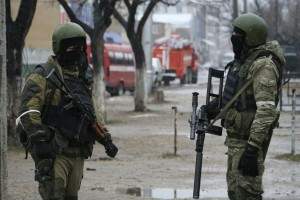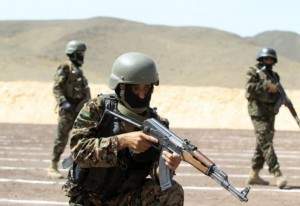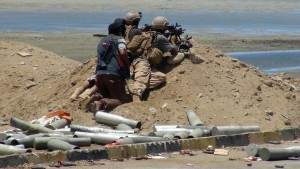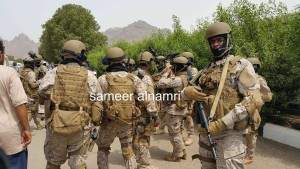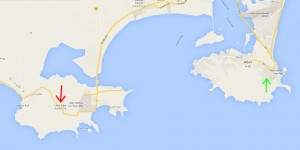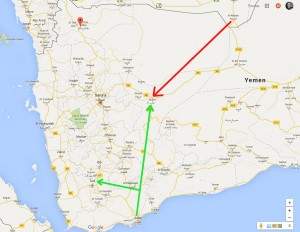Keep calm and prepare to celebrate
October 6, 2023 by Thomas Wictor
I earn my living though investing. My brother Tim manages my accounts. Investing isn’t for everybody, because the market is subject to completely irrational panic-selling. The world, in fact, is in love with fear. My message, on the other hand, is to keep calm. Everything will be fine.
People are afraid because of articles like this.
With Troops On the Ground, Did Russia Just Take Over OPEC?
Few doubt that a geopolitical Rubicon has been crossed with Russian troops now on the ground, and active, in Syria. There hasn’t been this much Russian activity in the Middle East since before the fall of the Berlin Wall. Putin watchers and Russia experts across the political spectrum are wrestling with what it all means…
How does Syria matter? While it’s no oil-producing powerhouse by OPEC standards, even Syria’s paltry production accounted for 25 percent of that nation’s economy (although ISIS now controls most of Syria’s oil fields). But Syria is ideal transit territory for pipelines to European markets for oil or gas originating in Iraq and Iran.
More important, given the build-up of Russian military men and materiel in Syria, is geography. Damascus is closer to Baghdad than Washington is to Boston, and not much further away from Riyadh than New York is from Chicago. Russia’s military is now no longer deployed mainly on its Baltic borders but is in the world’s premier petroleum neighborhood.
This is truly hilarious fear-mongering. In the Ukraine, Russia’s best ground troops have been slaughtered.
In the article published by finance-focused site Business Life, or Delovaya Zhizn in Russian, it was revealed that as of Feb. 1, the Russian government paid compensation to more than 2,000 families who had lost soldiers and to 3,200 military members who were injured, Forbes reported…
The Ukrainian government alleges more than 10,000 Russian troops have fought in Ukraine, including in key moments such as the large-scale fight that took place in Debaltseve in January.
That means that eight months ago, the Russians had suffered casualties of over 50 percent. Their regular troops deployed to Ukraine include the 76th Guards Air Assault Division. These are awful soldiers. Unarmed, singing Ukrainians made them scream and fire their weapons in the air. Their depressed commander had to restrain them.
But the other troops in the Ukraine are the fabled Spetsnaz, who are said to excel in unconventional warfare.
They’re getting their clocks cleaned by the Ukrainians.
I’ve met many genuine American and British former special-warfare troops. One of them said, “The Russians are damn lucky that they never had to fight us.”
If Russian ground troops try to engage Arab League, Pakistani, African, and Israeli special-operations units, it’ll be a bloodbath. I was finally able to find photos of the Yemeni special forces who were landed in Aden on May 2, 2015. These men were trained for four months by Saudi Arabia. The US had trained Yemeni special operators for years. This was what they looked like in around 2014.
Here they are fighting in Aden after May 4, 2015.
The one on the left has an FN MAG general-purpose machine gun, while the one on the right has a tactical M4 carbine and a Milkor Mk 1 40mm grenade launcher. What the Saudis did was dramatically increase the firepower that each man could bring to bear, and they were given the most modern protection and communication gear.
These soldiers below were originally identified as Saudi, but they’re actually Yemenis uniformed and armed as Saudi special forces.
They lack the Saudi Airborne Brigade insignia on their shoulder, but in all other ways, they’re equipped as Saudis.
Yemenis are doing the vast majority of the fighting, while the Saudi-led Coalition provides air power, armor, and special operators.
You see a lot of jibber-jabber like this.
Let me tell you why you’re not reading in-depth analysis of the war in Yemen: It’s because Yemenis and the Coalition are absolutely kicking the tar out of the Iranian Quds Force, the Houthis, Hezbollah, the loyalists to former dictator Ali Abdullah Saleh, and the militias of the Revolutionary Committee.
This was not supposed to happen! Everybody knows that Arabs are incompetent warriors. The mega-wealthy, spoiled Saudis threw their untried army into Yemen without a coherent plan for victory. Houthis are magnificent, aboriginal freedom fighters who’ve never been defeated. The richest Arab nations are waging war on the poorest Arab nation for no reason!
See, the problem is that when you make up total nonsense, people who live in the real world are under no obligation to act out your fantasies. From the beginning, the reporting on Yemen has been an unbroken string of lies. The Houthis invaded the capital of Sana’a on September 16, 2014, and took complete control by September 21. After an Islamic State attack, the Houthis mobilized on March 20, 2015, and swept southward. By March 25 they’d taken all of Aden except for two pockets: Little Aden (red arrow) and Crater (green arrow).
The Coalition intervention that began on March 26, 2015, was not intended to defeat the Houthis by air power. Instead the Coalition used air strikes, naval fire, and air drops to keep Little Aden and Crater out of Houthi hands while Yemeni troops could be trained to take back their country. During this period the Coalition degraded Houthi military capabilities, but other than that, the intervention simply preserved the status quo.
On May 2, 2015, about fifty Yemeni and United Arab Emirates special forces were landed in Aden to engage in ground combat. On July 14, 2015, two units of Yemeni special operators and UAE Presidential Guardsmen broke out of Little Aden and Crater to take back Aden International Airport.
It wasn’t until August 3, 2015, that a full-scale ground operation began, as hundreds of UAE tanks, infantry fighting vehicles, light armored vehicles, mine resistant ambush protected vehicles, and self-propelled artillery pieces emerged from Aden.
On August 4, a unit of Yemeni mechanized infantry, tanks, and Saudi special operators invaded from the north, through the Wadiya border post. Both the Emirati and Yemeni-Saudi forces headed for Marib. On September 7, Qatar sent 1000 special operators, 200 tanks, and 30 Apache helicopter gunships to Marib, and on September 12, the battle began.
Today is October 6, 2015, a little more than three weeks later.
Al Houthis flee last bastion in Marib
With almost full control of strategic province, coalition is advancing towards capital
Dubai: Al Houthi militiamen who had been occupying large parts of Yemen fled their last bastion in Marib en masse on Tuesday, according to news reports, putting the strategic province in almost full control of coalition forces working to restore the country’s internationally recognised government.
Arabic language news outlets reported that coalition forces and the Yemeni Popular Resistance successfully retook the Al Zor area in the city of Sirwah, the last Al Houthi stronghold in Marib province. Marib is expected to be the coalition’s launching ground for its campaign towards the capital Sana’a, which remains in Al Houthi hands.
The green and red lines show the direction of the Yemeni and Coalition ground forces.
Next is the taking back of Taiz.
Taez has become the new front line in Yemen’s war against the Houthis as pro-government forces move across the province to capture its capital of the same name, which has been ravaged by months of fighting and the spread of disease.
Fighting along Yemen’s Red Sea coast intensified after loyalist forces of president Abdrabu Mansur Hadi – backed by coalition forces from the UAE and Saudi Arabia – last Thursday helped the resistance in Taez regain control of areas leading to the Bab Al Mandeb strait, along with Mayoun island, situated in the waterway itself.
Bab Al Mandeb is strategically important – about 20 per cent of all trade and almost 7 per cent of oil and fuel cargoes pass through the narrow waterway, located on Yemen’s southwestern coast.
Winning control of these areas was the first step towards driving the Houthis out of Taez, said the spokesperson for the province’s popular resistance, Rashad Al Sharabi.
“The forces will start the war from Bab Al Mandeb, and then they will go towards Mokha district and finally they will reach the entire province,” he told The National.
There’s no doubt: The Yemenis and Saudi-led Coalition have fought brilliantly and humanely. Bashar al-Assad has been mired in war for four years. Hundreds of thousands have been killed. In contrast, the Yemenis and Coalition have used a relative handful of men to rout the Houthis, the Quds force, Hezbollah, and the Revolutionary Committee in less than a month, and the phony casualty figure of 4500 has remained unchanged since May.
Don’t be afraid of Russia or Iran. What you’ve seen in Yemen is the equivalent of the Arab League doing this.
When the real war starts, the Arab League will be joined by combat units of Israel, Turkey, Azerbaijan, Pakistan, and Senegal. In support one way or another will be Japan, Poland, Italy, the Netherlands, Germany, France, the UK, and the US.
Today I got hate mail from an Egyptian who claims to be a member of the Rapid Reaction Forces. He wrote to me in Hebrew, so I have no idea what he said other than, “You are an anus!” His Facebook photo is— Well, see for yourself.
In a practical sense, Jew-hate is obsolete. Against all odds and my expectations, the Arab League has rendered it so. The days of existential threats to an entire people are almost over.
Buy your champagne now. The balloon could go up at any minute.


